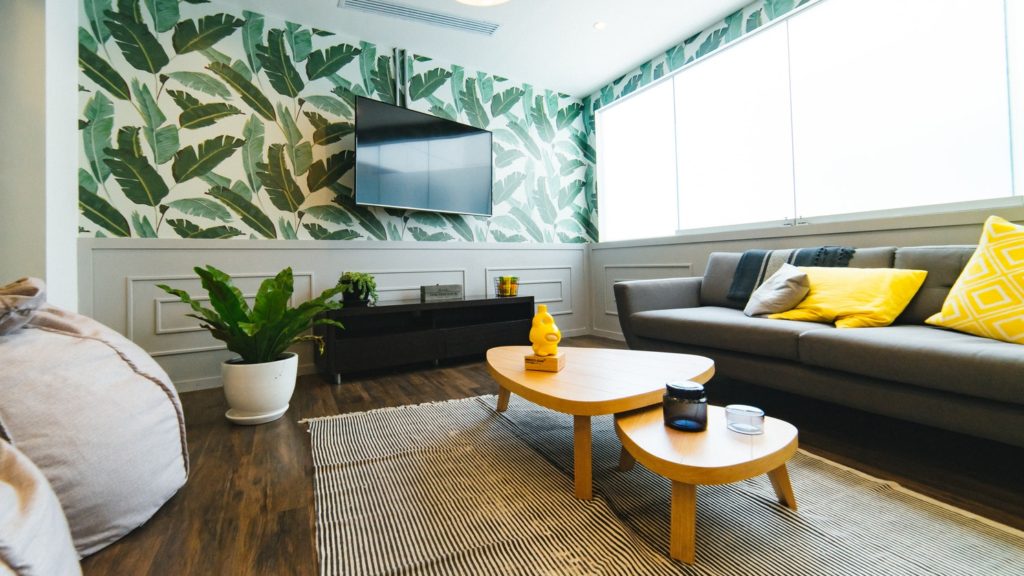Let’s get back to coworking, a topic very close to the hearts of digital nomads, along with design aimed at users’ well-being, which is also very dear to me.
Whereas design is actually often aimed at people who stay in accommodations such as hotels, holiday homes and even hostels, coworking spaces on the contrary mainly depend on workplace dynamics. These are mainly focused on functional elements and don’t always consider how much the choice of a material over another, or a sofa instead of another etc. can benefit or otherwise undermine the life of a remote worker.
Today, I want to talk about some ideas and righteous examples of coworking spaces design around the world that required the adoption of intelligent strategies, sometimes easy to reproduce and imitate, for the well-being of their members.
Watch out: these tips can be very important for the managers of coworking spaces because in a few years, with an increasingly higher number of digital nomads around and the fact that whoever owns an empty room for rent will turn it into a coworking, such factors can really make the difference among those who still have a place on the market and those who don’t.
Natural materials

If, on the one hand, the products sold by the most famous retailers of consumer furniture are nice, simple, youthful and easily adaptable to different styles, on the other they often contain cheap glues that become toxic with the passing of time.
Consumers are increasingly aware of this so that the choice to create a healthy setting, with non-toxic materials, natural dyes and few chemical glues really makes the difference, especially for those who are planning a long-term coworking subscription.
In East London, for instance, the De Beauvoir Block coworking, redesigned by Sella Concepted studio, decided to cover the original and cold industrial container (an Edwardian building made of red bricks) with natural materials and a really warm colour palette.
The project by SelgasCano studio is even “greener”, in any sense, and it involves the transformation of the most ancient food market in Lisbon into a coworking space, called Second home. Thousand species of plants are the main items of furniture.
Saving vs. Ergonomics

We Work, Richmond Street, Toronto. ph. Eloise Ambursley
Over the past few years, the design of public places has intentionally pretended to confuse “natural materials” with “cheap furniture”. Whereas sometimes the two things can partly match, most of the times they don’t, and saving and well-being are rather opposites.
Let me explain: in the (very long by now) age of pallet sofas, definitely very nice and peculiar (although even deli counters in supermarkets or the sofas and the reception desk at our grandmother’s hairdresser are made of pallets now), we easily forget that digital nomads who choose a coworking space will be sitting for several hours on the same chair/sofa and, with time, unnatural positions will surely jeopardize their health, affecting the posture, spinal cord, chest muscles and many other things… even breathing!
Coworking managers who choose ergonomic chairs and tables for the benefit of their users behave like real “leaders”, paying attention to aspects that were once only considered by enlightened employers.
Don’t worry, though! Chairs can be both ergonomic and instagrammable, if this is the bone of contention.
A perfect example comes from Toronto, Canada, where the back-friendly spaces at WeWork show how beauty, fantasy and health of the posture can actually coexist.
Universal design

Lima Comunal Coworking
Some time ago, during the Accessibility is cool campaign, I wrote how easy it is for public spaces like pubs, libraries and restaurants to adopt universal design, thus making their spaces accessible to all, even people with either permanent or temporary motor and sensory disabilities.
Even coworking spaces can (must?) conform to these small but important rules of inclusive design.
The rules of universal design include
– wide and “open” spaces, unhindered and easy to walk through,
– the presence of elements that reduce the reverberation of sounds, like carpets and books/magazines (ideal not only for hearing-impaired users but also to concentrate),
– the presence of rounded corners and glass windows for an easier transfer of visual information to deaf people,
– the right lightning, neither too bright nor too soft.
An inclusive environment that looks like it was designed to make work life easier based on universal design principles is the Municipal coworking in Lima, Peru.
Parenting support areas

Digital nomadism is a self-determination more than a freedom choice, that encompasses life moments and living spaces, more than work.
For many of us, parenting falls into life moments and spaces, and it’s high time for coworking facilities to meet a need that almost all employers have been totally ignoring up to now: a space where parents can leave their children during the flexible hours of their flexible work, with a life that only asks for flexibility now.
From the area where moms can breastfeed in “flexible” peace (because, though it’s a natural right, not all moms like to breastfeed in public and prefer to live it as an intimate moment) to the nursery where children can sleep or play, giving their flexibleparents the chance to work in their flexible spaces/times without asking for NASA to intervene and rescue their kids from the other side of town (that definitely lacks flexibility).
Both in Italy and abroad, there are some interesting places devoted to this need, such as the Coworking Toddlerin Germany or the Comamain Bari, Italy.
They are valuable projects that are actually based on the maternity concept (as their names suggest), and become somehow “exclusive” in their own way, as they’re only aimed at parents (or just moms).
Future coworking spaces will have to be first of all designed for work and networking, yet fully aware that nomad workers won’t part with their children and will prefer places that can answer their daily practical needs, including parenting.
Another good example is the JuggleHub in Berlin,a common coworking space that offers fully equipped areas for children of various ages along with special needs teachers.
Watch out: even this aspect is and will increasingly be a decisive factor in sorting out which Coworking resists and which doesn’t. Many people followed the example of a group of moms who decided they didn’t feel like “asking permission” to become mothers; they actually chose nomadism and were followed by a number of fathers who never wanted to know anything about company life, thus being able to live parenting freely and in a more self-determined way.
6 Comments
-
Brandy
I love looking at how others design their work space. I have a corner to work from at home for now, but some day I’ll design a pretty awesome office space for myself.
-
Kristine Nicole Alessandra
It is a challenge to find a good working space when traveling. I would love to find a place where I could sit comfortably and not have any back pain. I wish business owners would think about this and provide their customers with comfortable sitting places and furniture that would last a long time.
-
Rhian Westbury
I’m not sure how I feel about coworking spaces as I’m used to having my own space. But it makes sense for them to be neutral to appeal to everyone x






Geraline Batarra
It is really a big challenge for me to find a perfect working place but for me I choose to set up my working place in our living wherein I can see my kids playing while I am working.